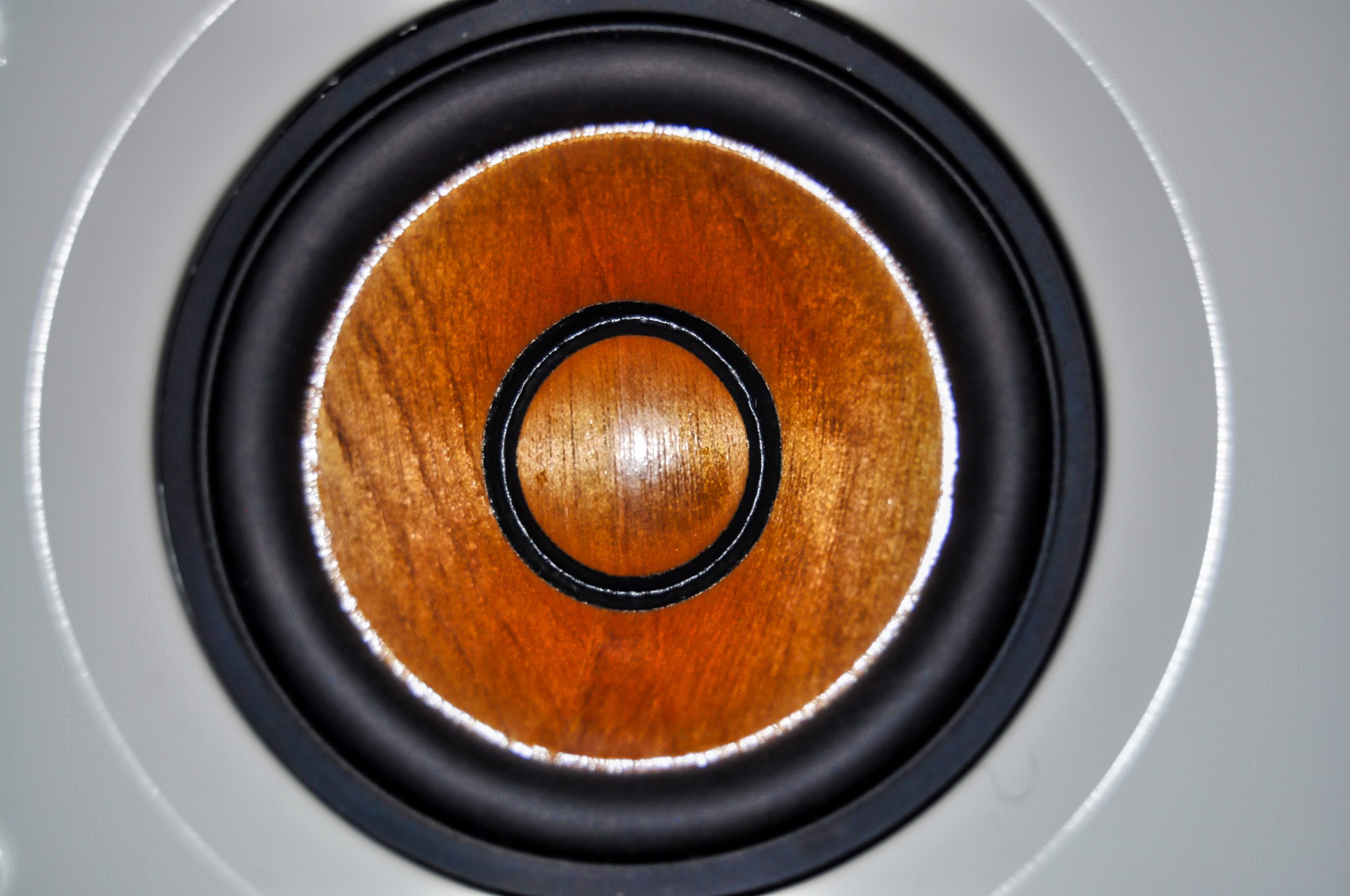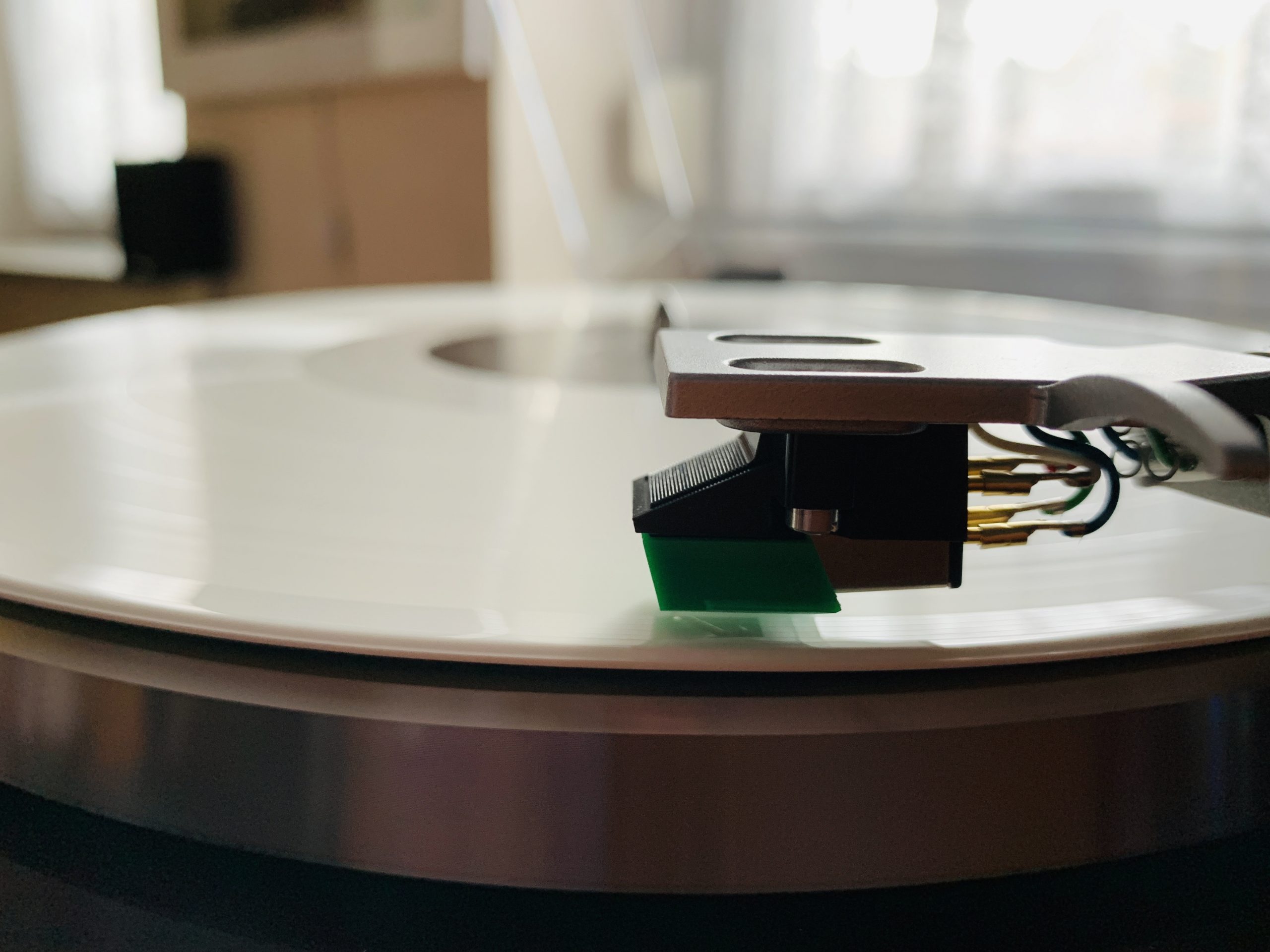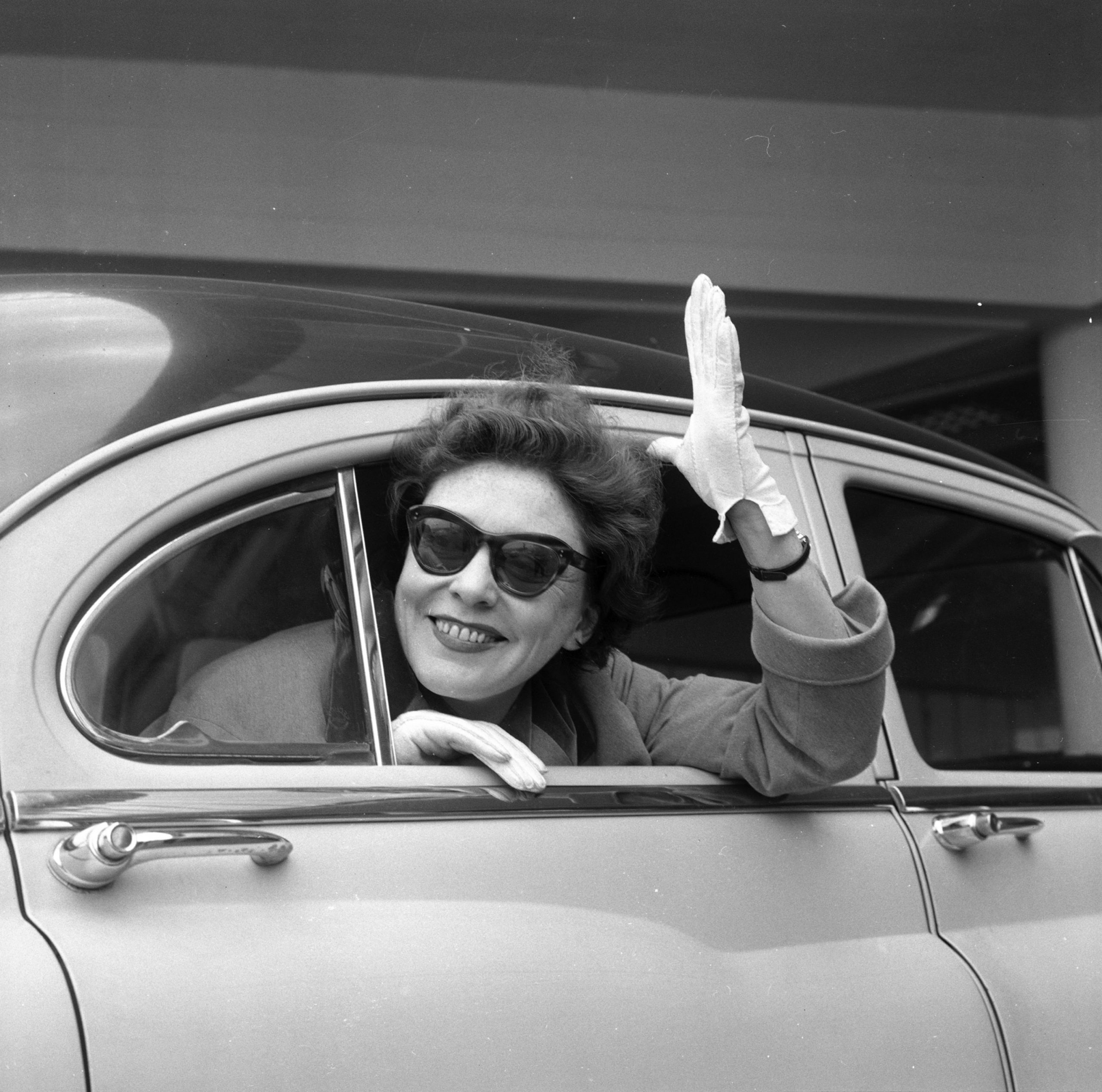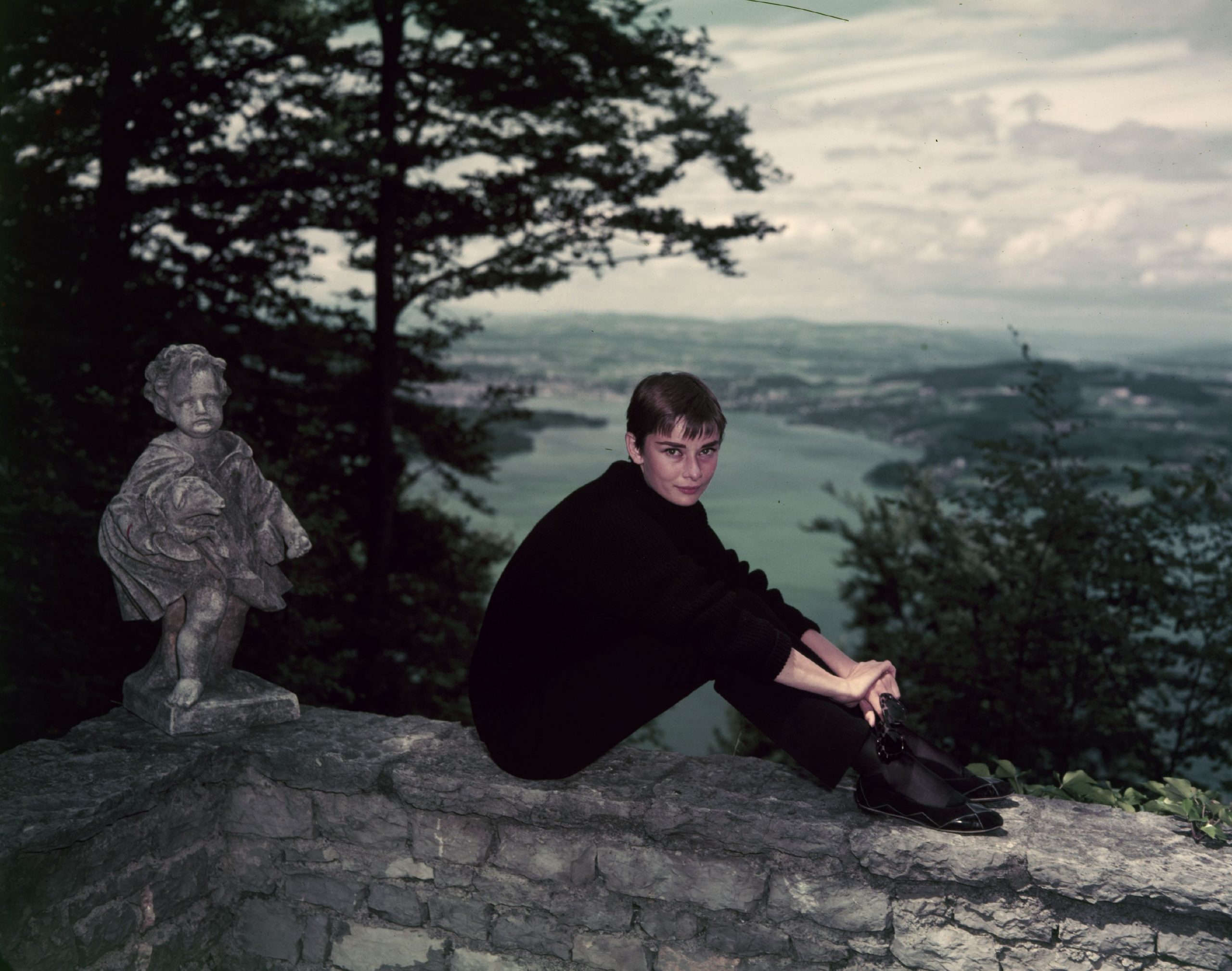“If she were thirty-five instead of twenty-five, she could run for president. There is no one like her,” said Hollywood director Allan Dwan about Gloria Swanson in the mid-1920s.
According to her memoirs, Gloria Swanson grew up in splendid circumstances: Her mother never wanted her daughter to wear the same as her classmates. Swanson remembered how she always stood out everywhere, and she liked that too. In a way, it was a preview of what was to follow in her life.
Part of her family came from Alsace and her great-grandfather always brought her marzipan from Baden-Baden, where he came from. Gloria Swanson’s father was a member of the US military who was regularly transferred to new bases. Thus, Swanson got to know different cultures at a young age.
She wanted to become an opera singer
When she was thirteen years old, she made the decision to become an opera singer one day: The family had just moved to San Juan in Puerto Rico, where her father had been transferred to. A friend of her father’s was able to arrange to rent the old, rococo-style opera house in San Juan for a school performance with his daughter Gloria in the lead role.
There Gloria’s desire to become an opera singer emerged – although at thirteen she had never seen an opera.
When she first looked into the film industry at a young age, it initially confirmed her decision: she thought nothing of the medium of film, which was still young at the time, and concentrated entirely on her desire to become an opera singer one day.
The fact that she finally took her first job as an actress in Chicago at the age of fifteen had to do with the fact that she wanted to earn money so that she could take professional singing lessons. Swanson gained her first experience in the film industry at Chicago’s Essanay Studios, which also made Charlie Chaplin films.
The medium of film was far from mature.
Los Angeles for the first time
However, she soon realised that acting did not give her the freedom to take singing lessons on the side: A virtue was made of necessity. Gloria Swanson gained her first experience in front of the camera at the age of fifteen. At that time, the 15-year-old Swanson played extra roles that often corresponded to the cliché of the typical high society lady – twice her age.
But this work was overshadowed by doubts: The medium of film was far from mature – it was even doubted whether film could hold its own against classical theatre.
While working for Essanay Studios, Gloria Swanson met the actor Wallace Beery. On a trip to California, Beery took Swanson and her mother through the film city of Los Angeles – a city full of factories, gas stations, markets and telephone wires. In her memoirs, Gloria Swanson writes that she saw nothing magical there at first.
Lost Films
When Gloria Swanson was hired by Mack Sennett Studios, which specialised in comedies, her opinion of Hollywood changed: at Mack Sennett Studios, Gloria Swanson became part of a family, so to speak, and was cast in major silent film roles for the first time.
Of the more than a thousand films Mack Sennett produced in the early days of the film industry, most are considered lost today. Thus, it is difficult to capture the complete oeuvre of Gloria Swanson as an actress.
At the time, Swanson understood that an actor’s performance did not depend only on the actor himself: she was fascinated by the work of the directors and all the technicians who made a film what it was. If she was going to be an actress now and drop her dream of opera, at least she would play in good movies, she told herself.
Cecil B. DeMille
As it would soon turn out, she not only starred in good films, she was one of the founding women of the classic Hollywood myth that still resonates today. Without actresses like Gloria Swanson, Hollywood would hardly have existed in this form.
In 1919 Gloria Swanson got a contract with Paramount Studios. The director Cecil B. DeMille was mainly involved in building Gloria Swanson into a screen star in the twenties: In Cecil B. DeMille’s so-called “saloon comedies” Gloria Swanson often took on the role of self-confident young women who defied the conventions of society.
Many of the films from the 1920s, including those that Gloria Swanson described as her favourites, are considered lost today. Among the lost films in Gloria Swanson’s oeuvre is the costume drama Madame Sans-Gêne (1925), which Swanson once described as her favourite work.
Change in the ranks of the stars
When the talkies came along at the end of the 1920s, many Hollywood stars perished: Gloria Swanson was able to continue her successes from the silent film era at the beginning of the 1930s, but there was a change in the ranks of Hollywood stars.
Film stars such as Marlene Dietrich, Greta Garbo and Mae West were the drawing cards on which the big Hollywood studios now relied. This led to Gloria Swanson retiring from the screen in 1934.
In the late thirties and forties Gloria Swanson was known as a regular radio guest in the USA.
Gloria Swanson made her big screen comeback in Sunset Boulevard (1950), playing the role of silent film diva Norma Desmond. The film was directed by Billy Wilder. The film character Norma Desmond has many parallels to Swanson’s own life: Like Swanson, Desmond longs for her glory days with director Cecil B. DeMille – the director played himself in the film.
Sunset Boulevard is not least a critique of Hollywood.
Sunset Boulevard
Swanson’s role in Sunset Boulevard is reminiscent of the silent film era: one notices in the movie that she came from a time when there was no dialogue in film. She works with all her facial expressions to give expression to her character. She does not rely on her voice as the only medium to make the audience understand her role.
William Holden, Swanson’s costar in the film, who knew nothing but the talkies, stands in contrast to Swanson here: he is a representative of the new generation of actors who can rely entirely on the expression of their voice.
The film is not least a critique of Hollywood: Norma Desmond is portrayed as a silent film diva who has taken leave of her senses and sees her only goal in life as standing in front of a camera and attracting public attention. The film shows the morbid excesses of what is called stardom: Gloria Swanson, as a former silent film diva, was predestined for this role.
“It’s the pictures that got small.”
By 1950, the silent film era was already long gone: but even today, one hundred years after Gloria Swanson’s career peak, the silent film diva is still remembered.
She was one of those actresses who saw Hollywood when the film city was still in its infancy: stars like Gloria Swanson were a role model for later Hollywood stars, created by the film studios almost like an institution.
“It’s the pictures that got small”: this quote from Swanson’s comeback movie Sunset Boulevard describes Gloria Swanson’s role in Hollywood.
One could almost say Hollywood stars after her would have had it easier: Swanson came from a very uncertain time for the film industry – the question at the beginning was whether the movie industry had any future at all. This question came up frequently in the early life of Swanson, who actually wanted to be an opera singer. The medium of film prevailed: This is not least thanks to the legacy of stars like Gloria Swanson.
Main source: Swanson, Gloria: Swanson on Swanson, 1980 Random House
Cover picture: Arrival of Gloria Swanson 1955 at Amsterdam Schiphol airport
Picture credit: Fotograaf Rossem, Wim van / Anefo, Nationaal Archief, CC0

 Deutsch
Deutsch









